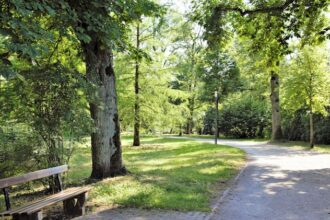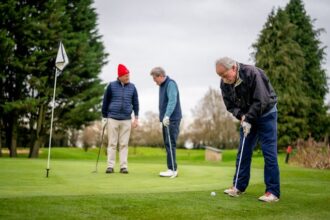The walkability of a neighbourhood is influenced by a range of factors, including its street layout and connectivity, the area’s density, accessibility to key destinations, aesthetic appeal, and investments in pedestrian and cycling infrastructure, along with the presence of natural elements such as tree coverage. However, not all neighbourhoods are created equal; those in impoverished and minority communities, especially within urban areas, often suffer from a shortage of vegetation and tree canopy. This lack of green space leads to the “urban heat island effect,” where urban temperatures significantly exceed those of surrounding rural or undeveloped areas.
This disparity is deeply rooted in historically discriminatory housing policies such as redlining. They originated in the 1930s in the United States; redlining involved categorising specific neighbourhoods, mainly those inhabited by minorities, low-income families, and migrants, as “hazardous” on maps the Home Owners’ Loan Corporation used for mortgage and insurance purposes. The consequences of these policies have contributed to the disproportionate exposure of these communities to extreme urban heat, and the enduring effects of redlining can still be seen today in the built environment of these neighbourhoods, which often have less green space and more pavement, exacerbating urban heat effects.
To address the gap in research on the interplay between urban heat islands, the legacy of redlining, and walking habits among older adults, a study by Florida Atlantic University, in collaboration with the University of Miami, was conducted. It explored how individual and neighbourhood characteristics, including historical redlining scores, correlate with land surface temperatures during the summer. The researchers also investigated whether higher temperatures were linked to decreased walking among older adults and if historical redlining scores influenced this relationship. Furthermore, they examined whether neighbourhoods with worse redlining scores experienced higher temperatures during the summer.
The study, published in the Journal of Urban Health, indicated that discriminatory policies such as redlining have left lasting marks on neighbourhoods across the United States, increasing their vulnerability to harmful environmental conditions like extreme heat. The findings revealed that higher summer temperatures correlated with reduced walking activity in neighbourhoods, although this was only significant in areas historically rated as “still desirable” or “best.” In contrast, in neighbourhoods rated as “definitely declining” or “hazardous,” no significant link was found between temperature and walking, possibly due to a lack of recreational alternatives or because lower-income residents rely more on walking for essential activities for economic reasons. Neighbourhoods with poor redlining scores also recorded higher peak summer temperatures.
Dr Diana Mitsova, the study’s senior author and a professor at FAU’s Charles E. Schmidt College of Science, noted, “Neighbourhoods with historic redlining scores of ‘still desirable’ and ‘best’ tend to have more favourable built and social environments for walking, such as higher socioeconomic status, more greenspace, and better pedestrian amenities. However, we found that people in these affluent neighbourhoods walked less when temperatures were higher, likely because older adults in wealthier areas often have alternative transportation options and other ways to exercise, so they may reduce walking in extreme heat.”
The study also highlighted some regional disparities and demographic patterns: people living in the South and West experienced lower peak summer temperatures compared to those in the Northeast and Midwest; neighbourhoods with higher area deprivation and more African American/Black residents faced hotter summer temperatures; neighbourhoods rated as “best” for redlining had lower peak summer temperatures than those with other redlining scores; Hispanic and Asian individuals, as well as those with higher incomes, were less likely to live in areas with high summer temperatures. “While more research is required, our findings highlight the urgent need to address urban heat islands in historically marginalised communities,” said Mitsova. “This is especially critical as older adults in these areas, who are more vulnerable to heat-related health issues, face greater exposure to extreme temperatures and associated health risks.” This comprehensive study used data from the 2017 National Household Travel Survey, which included responses from over 260,000 individuals. It linked these to summer temperature data and social and environmental characteristics, including historical redlining scores, assessing the amount of green space in each respondent’s neighbourhood. The focus was on 3,982 older adults with an average age of 73.
More information: Diana Mitsova et al, Summer Heat, Historic Redlining, and Neighborhood Walking among Older Adults: 2017 National Household Travel Survey, Journal of Urban Health. DOI: 10.1007/s11524-024-00892-6
Journal information: Journal of Urban Health Provided by Florida Atlantic University








